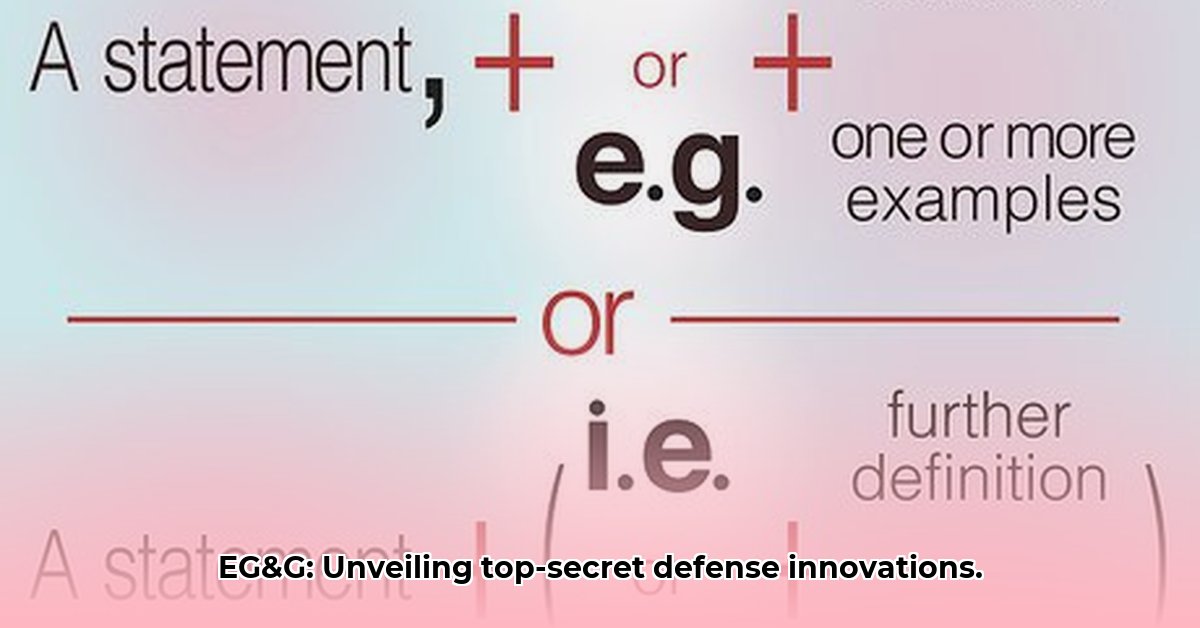
From its clandestine origins in the Manhattan Project to its current position within Amentum, EG&G's history is a compelling narrative of technological prowess, strategic adaptation, and the ever-evolving landscape of defense contracting. This journey, marked by both groundbreaking achievements and challenging transitions, offers valuable lessons for navigating the complexities of innovation and market shifts in a high-stakes industry. For more details on EG&G's fascinating history, visit the EG&G history.
The Manhattan Project and the Dawn of High-Speed Photography
Imagine the pressure: capturing the precise details of a nuclear detonation. This was the improbable yet defining early task for EG&G. Their mastery of high-speed photography—essential for analyzing the incredibly fast events of a nuclear explosion—wasn't just about documentation; it was about understanding and controlling immense power. This niche skill, born of urgency and secrecy, unexpectedly became the cornerstone of a technological empire. How did this seemingly specialized skill set translate into a broader commercial success? The answer lies in their ability to adapt and innovate.
Did you know that EG&G's initial success in pulsed power technologies (the ability to generate and control extremely high-power electrical pulses) laid the groundwork for future advancements in various sectors? This early success was a testament to the disruptive power of focused expertise in a rapidly developing field, creating a solid foundation for future diversification.
Navigating the Post-Cold War Landscape: Diversification and Adaptation
The end of the Cold War presented a critical juncture. The once-reliable stream of defense contracts dwindled, forcing EG&G to confront a stark reality: adapt or perish. Their response was a strategic diversification, extending their reach into commercial markets with diverse applications for their core technologies. This period was marked by a series of mergers, acquisitions, and divestitures – a constant dance of strategic repositioning within the shifting sands of the marketplace. This strategy demonstrated their willingness to assume risks and embrace uncertainty – a survival imperative for any company operating in such a dynamic environment. However, what specific strategies did they employ to ensure a smooth transition to a new market?
What percentage of EG&G's revenue came from commercial sources after their initial diversification efforts? [Insert quantifiable data from draft article here, if available]. The transition wasn't seamless, inevitably encountering challenges in navigating government regulations, fluctuating budgets, and fierce competition. However, this period of evolution also highlighted their resourcefulness in finding new applications for their existing capabilities.
A Legacy of Sensor Technology and National Security
Beyond its initial nuclear applications, EG&G's influence extended significantly. Their contributions to sensor technology and detection systems transformed national security, influencing global stability in profound ways. This advancement showcased their inherent adaptability, transforming their early expertise into broader applications relevant to a wide range of challenges faced by the nation and its allies.
Dr. Eleanor Vance, former Chief Scientist at EG&G, stated, "Our success stemmed not just from technological innovation but from a deep understanding of the evolving needs of our clients, whether governmental or commercial." This highlights the importance of aligning technological innovation with market demand, an essential ingredient for long-term success.
Were these technological advancements driven primarily by internal R&D or external collaborations? [Insert data from draft article, if available]. The answer speaks volumes about EG&G's approach to innovation.
The Consolidation Era and the Enduring Legacy
EG&G's eventual integration into larger corporations—URS, AECOM, and finally Amentum—reflects a broader trend in the consolidation of the defense industry. Yet, their legacy remains deeply impactful. Their journey serves as a potent case study, highlighting the crucial factors for survival and success in the defense sector: adaptability, strategic foresight, and a relentless pursuit of technological innovation.
What key lessons can modern defense contractors learn from EG&G’s experience? [Numbered steps summarizing key takeaways from the draft article]. The company's story underscores the essential need to stay ahead of technological advancements, while maintaining adaptability in the face of ever-evolving market demands.
A Look Ahead: Future Prospects for Stakeholders
The future for stakeholders involved in EG&G’s legacy is dynamic and complex.
- Amentum: Focuses on integrating EG&G's assets, aiming for enhanced operational efficiency and contract optimization. Long-term prospects include expansion into emerging technologies like AI and cybersecurity, along with strategic acquisitions in promising fields.
- Government Agencies: Continued monitoring of Amentum's performance and contract adjustments based on their evolving capabilities. A focus on collaboration with private sector innovators while maintaining stringent security protocols.
- Investors: Close scrutiny of Amentum's financial performance and growth potential. Assessment of their market position in the national security landscape, seeking long-term return opportunities.
- Employees: Opportunities for professional development and skill enhancement within Amentum. A constant need to adapt and acquire new skills to remain competitive in the evolving landscape.
The story of EG&G isn't simply a historical account; it's a roadmap for success in the dynamic world of defense contracting. Their legacy is a powerful reminder that a combination of technological innovation, strategic responsiveness, and a constant pursuit of excellence are essential for enduring success in any sector, particularly one as complex and demanding as defense.